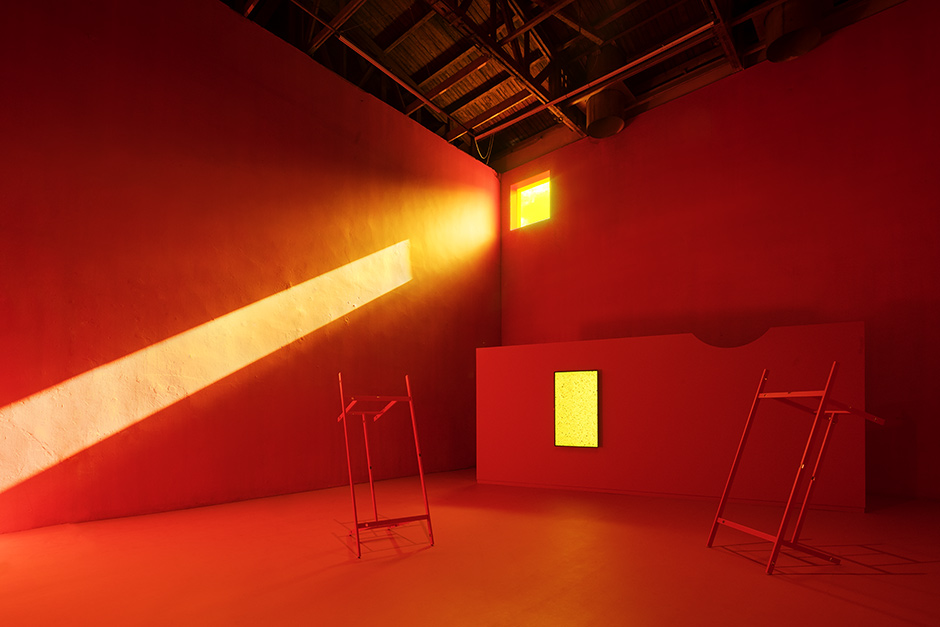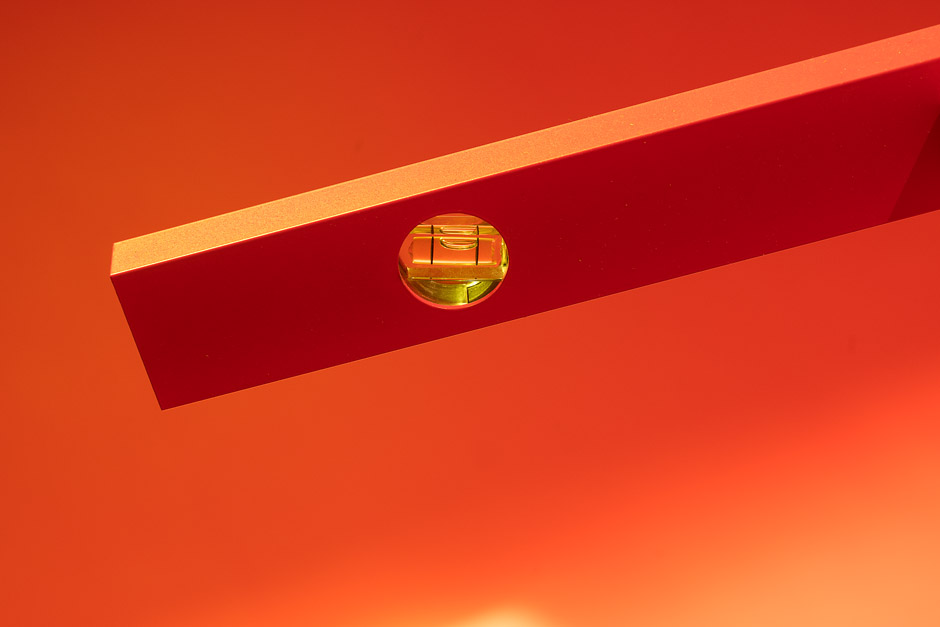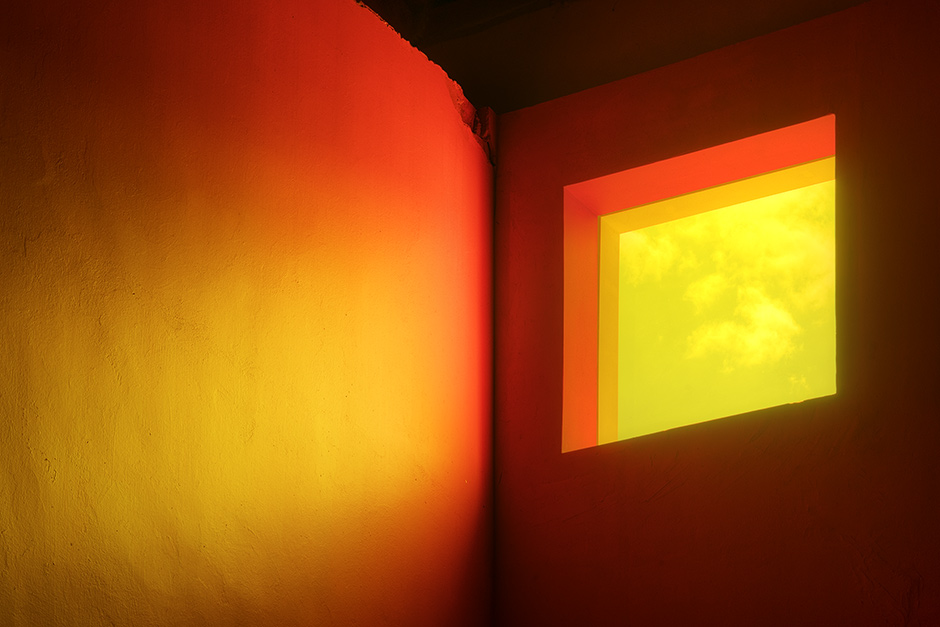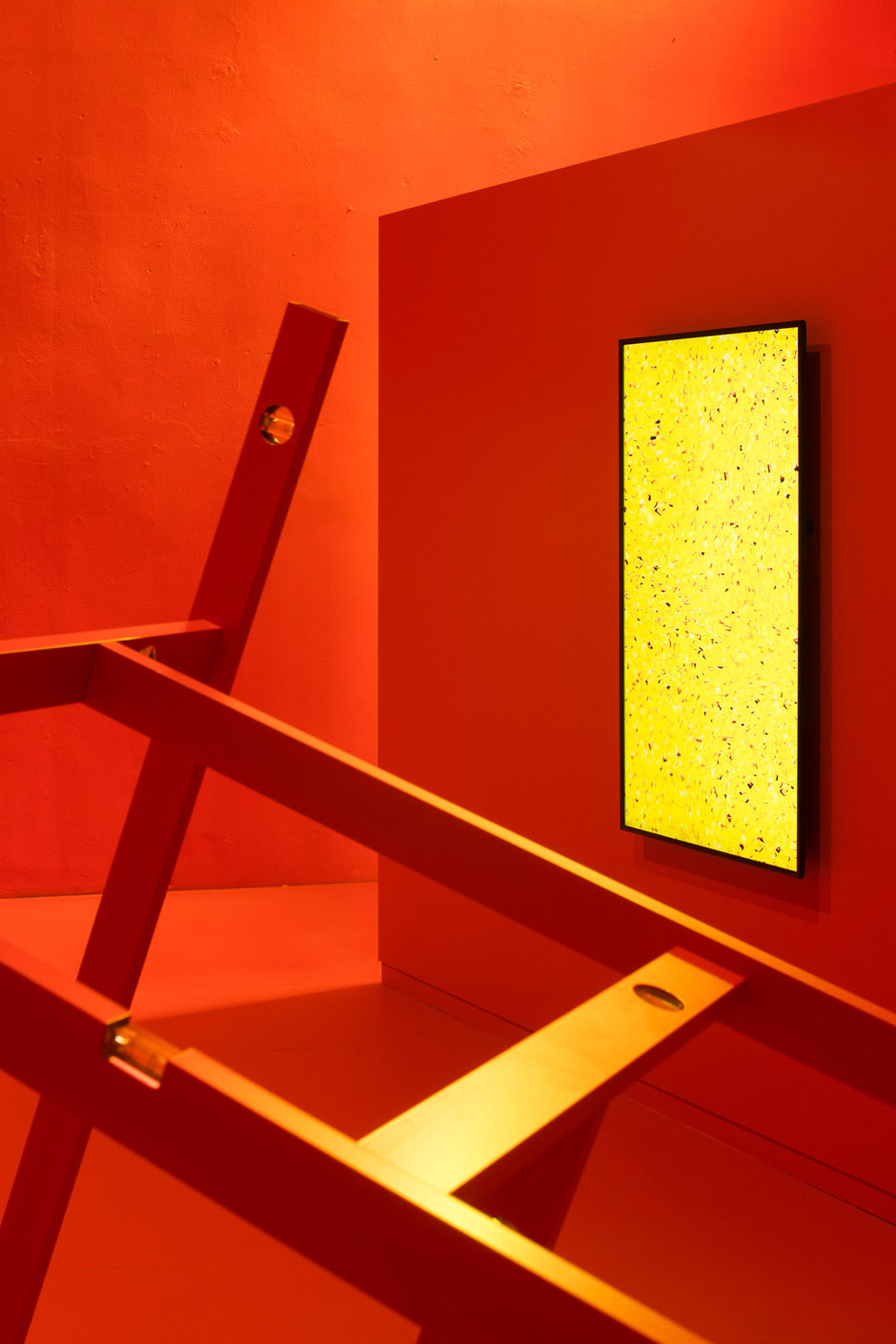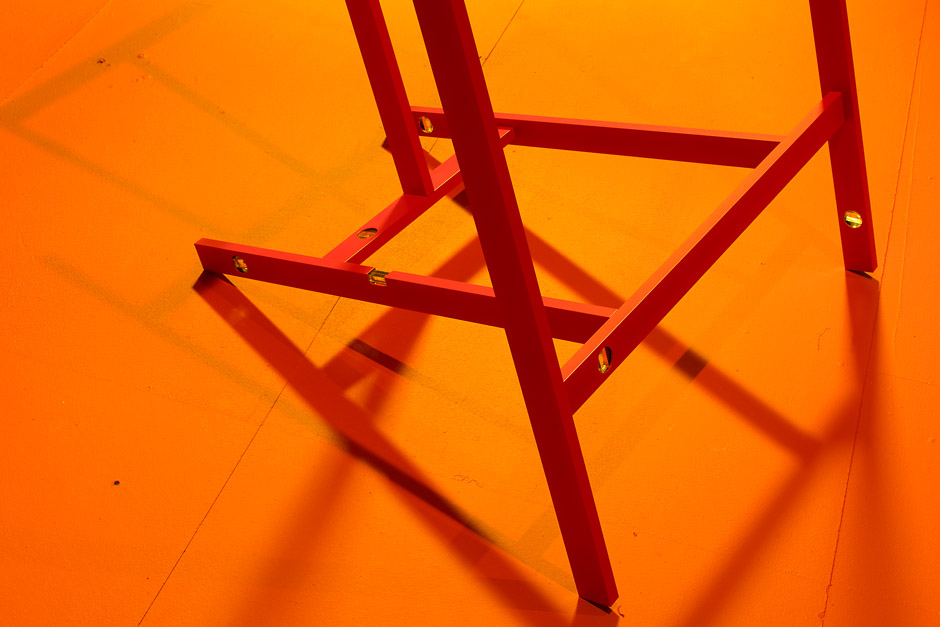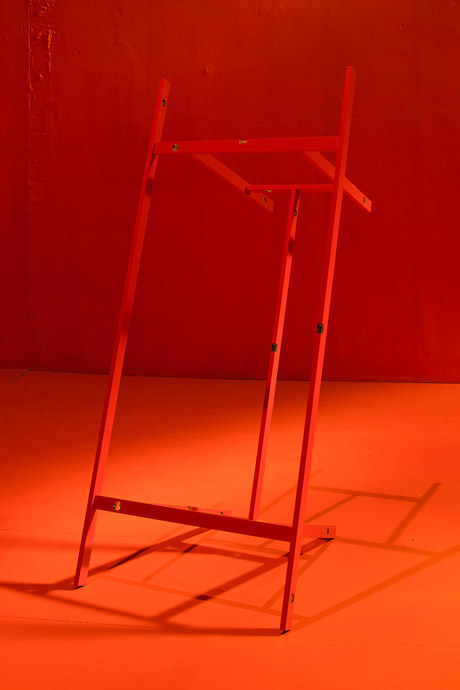Interview to exhibition with L.M.
Eva Riebová
...In one of the discussions Lukáš pointed out that an interview is the only format that allows learning something about an artist.
Why do you think an interview with an artist is the only way how to learn something about him?
There are certainly more ways, in any case though an interview is an authentic format, where there are specific formulations. You can see how people express themselves, but when looking at an artwork I am also interested to know what its author looks like; what face should I connect with the given artwork. It is also great if the artist discloses his or her sources of inspiration. That is the moment when you glimpse inside his head. Books, films, other artists... there are so many things. I am actually interested in what they do when they do not create; if someone go to the mountains for example. Then there is the radical option, a life with a partner, which I do not recommend. You can ask my wife, that it’s nothing much.
Did you really give lectures at Charles University?
I lectured about contemporary art at the Art Department of the Faculty of Education. Yet it’s a bit different type of school than what I was used to, I didn’t find myself in it. Schooling actually bothers me.
And yet you’ve been teaching at the AVU since last year, moreover at the Atelier of Painting, despite that you have never worked with this medium.
It’s a paradox of a kind, but this is something quite different; at AVU you meet people interested in the same thing, so I do not apprehend it as schooling. We applied for the job together with Robert Šalanda, who does painting, while I prefer installations. We based our application on this very combination as we think that art is a concept superior to all media and that it is good to open such ateliers so that the students of painting have some awareness of other media too. By this I don’t mean to say they should make installations. It still remains a Painting Atelier, in this I find the traditional division by individual media good. It makes sense only in the moment when another medium is suitable for a given intention. Generally speaking I quite follow painting, so it was not such a surprise for me.
Do you also get a feedback about your own art thanks to teaching?
What I find there are specific technique-related questions. Then we often tackle the issue of how to paint “nothing” – a background where nothing happens, subsidiary motifs, how to work with a mistake etc. And did it manifest itself? I don’t know, there will be a lot of red now in Kostka, and I haven’t used colors much until now, there may be a connection.
Your work and approach show quite a remarkable obstinacy, even obsession with detail. Painting the Kostka red is a good example. How does it feel to work with such a personal trait? And live with it?
Quite badly sometimes. When making interviews for the SPZ, we embarked on it with Adéla Babanová who also said she was obsessed with detail. What happens in her case is when she is finishing a video and gives it its final shape, if she discovers e.g. a minute error in a caption, which no one else would care about she takes the pain of redoing the whole thing. I experienced this as well; I used to repaint the pedestal also from the back, where it could not be seen. Yet slowly I learn these are matters of no consequence. It may embark on some kind of obsessive disorder. I hope it is not going to get worse. Let me elaborate on the red color. The Kostka Gallery is quite a complicated space, but it essentially is a block. Your measurements are wrong, I took it by laser and it is 11.51 × 9.1 × 8.07 m. Having eight meters above your head you have to work with a certain intention and do something tailor-made. I started to consider a huge tank in which the whole space would drown.
In the red space of Kostka you immerse objects made of water levels, then tables, which however do not fulfill one of their basic functions, stability. The legs cannot support the tables and the whole installation finds itself in a sort of deliberate imbalance. I apprehend this as a mistake in a precise rendition.
Well, you take it right. Mistake in art is an important topic. In fact, for some time now I have worked with things, which seemingly look perfect, yet are built on pointlessness. In this case the objects should be in horizontal position, but they are turned or toppled instead.
Once while installing an exhibition you mentioned your interest in an environment, which denies elementary laws of physics or acts at least somewhere on the brink. That is why you “immerse” the exhibition “into fluid” and work with the unstable. What does such denial of physical laws mean to you? A link comes to my mind with the work of Stanislav Kolíbal, who since the second half of the 1960s worked in abstract compositions with instability pointing at existential topics, at the frailty of human being.
It is not so in my case, but the topic of balance, or imbalance rather in general can be related to many things. I don’t want to explain what all that instability can represent, as it is quite obvious. It is also connected with accuracy, the right measure and perfection. I recall one older work by Matěj Smetana, which arose by him going around expositions displaying artworks by classic minimalists such as Donald Judd and others, and taking photos of battered edges. Such like things I am interested in. One can probably not deny physical phenomena, but you can arrive at a strange divide where the artwork casts certain impression yet all is quite different in reality.
Do you adhere to one motif in your work, which you develop over time, or do you pursue several different topics at the same time?
No, certainly not at the same time, I have a problem to work on more things simultaneously. Should I put it in very general terms, I am certainly interested to know what is in the background of a certain shape, a kind of second distance. This can be applied to many things. It does not need to be anything physical.
Would you say that in your work you comment, observe or tell stories?
I definitely rather feel in the role of an observer; as a kind of filter through which information sneaks in. Yet I do not want to take a particular stand, I like ambiguity. I certainly wouldn’t like my things to moralize in any way or to be excessively serious. Nothing against seriousness; it just mustn’t be exaggerated.
That is why you and Robert Šalanda interspersed your interviews with other artists for the SPZ Catalogue by banal questions.
We had e.g. a series of questions from job interviews, which are very good. I don’t remember who told us they did not apply anywhere and that we should sod off.
Yeah, I found a few of them for you, too. But I didn’t want to borrow any of yours, as you might be well prepared to answer them.
Which means you are not going to ask me about my favorite gallerist, curator, or artist?
All right then, who is your favorite artist?
That keeps changing. There are so many of those people, mostly doing something quite different from me. So for instance Jos de Gruyter and Harald Thys, who make such videos with polystyrene figures, which jabber some crap. One of them used to work in a mad house, I think. Then for example Oskar Dawicki, Simon Starling, Cyprien Gaillard. Mark Leckey – I saw his large exhibition in New York. I haven´t enjoyed similar experience for a long time. And as I happen teaching at the Painting Atelier now, then it is Victor Man. He is a good example of a painter working with architecture and dramaturgy of an exhibition in a very perceptive manner. It seems to me that in painting there is a tendency to hang pictures “progressively”, on iron structures in space and the like. It’s sworn by referring to how it is done in the world, which moreover is not quite true. Sometimes a little will do, when paintings are in one line graded by two meters distance between them, which creates a perfectly regular pattern. At the same time it’s possible to focus on individual artworks and it looks splendid. Of course it depends on the respective exhibition and space.
Thanks. And now the promised interview: the Forbes magazine published an article with the headline “5 worst questions you may get at a job interview”. Imagine you are not applying for a job with some company, but rather for an exclusive position on the art scene.
Such as replace Andy Warhol on position No. 1 on the Art Facts chart? I’d like that. Or shake off Jiří Kovanda on the chart of our friends from J&T.
For instance. Well then: Why should we choose exactly you out of so many candidates?
There is no one better.
What is your greatest weakness?
I work awfully hard.
Clear, that is the obsessive disorder of yours we spoke about…
No, that is what you are to say to be admitted.
Quite on the contrary, in fact you are supposed to mention a weakness you succeeded to overcome in the past and turned it into your strong point.
OK.
Where do you see yourself in five years’ time?
As the rector of AVU... and put laughter in parentheses, 32.
Here is my last question: What can you bring to our department?
Lots of red color.
All right. So we shall know at the exhibition opening whether you made it. To conclude with, as both of us are mountain fans – give me one tip for a good mountain hike.
Well e.g. the Tatra Mountains are quite good for skialpining. Baranie sedlo (Ram pass). You might as well meet with Pavlik Bém there. He would sit around the place sometimes.
- 1
-
view of the installation
Galerie Kostka / MeetFactory
- 2
-
detail: spirit levels, aluminum construction
85 × 85 × 220 cm
- 3
-
yellow plexiglass, chipboard
145 × 145 × 50 cm
- 4
-
detail: spirit levels, aluminum construction
85 × 85 × 220 cm
back: video, 5:23´
- 5
-
detail: spirit levels, aluminum construction
85 × 85 × 220 cm
- 6
-
video, 5:23´
back: chipboard panel
600 × 270 × 20 cm
- 7
-
spirit levels, aluminum construction
85 × 85 × 220 cm
